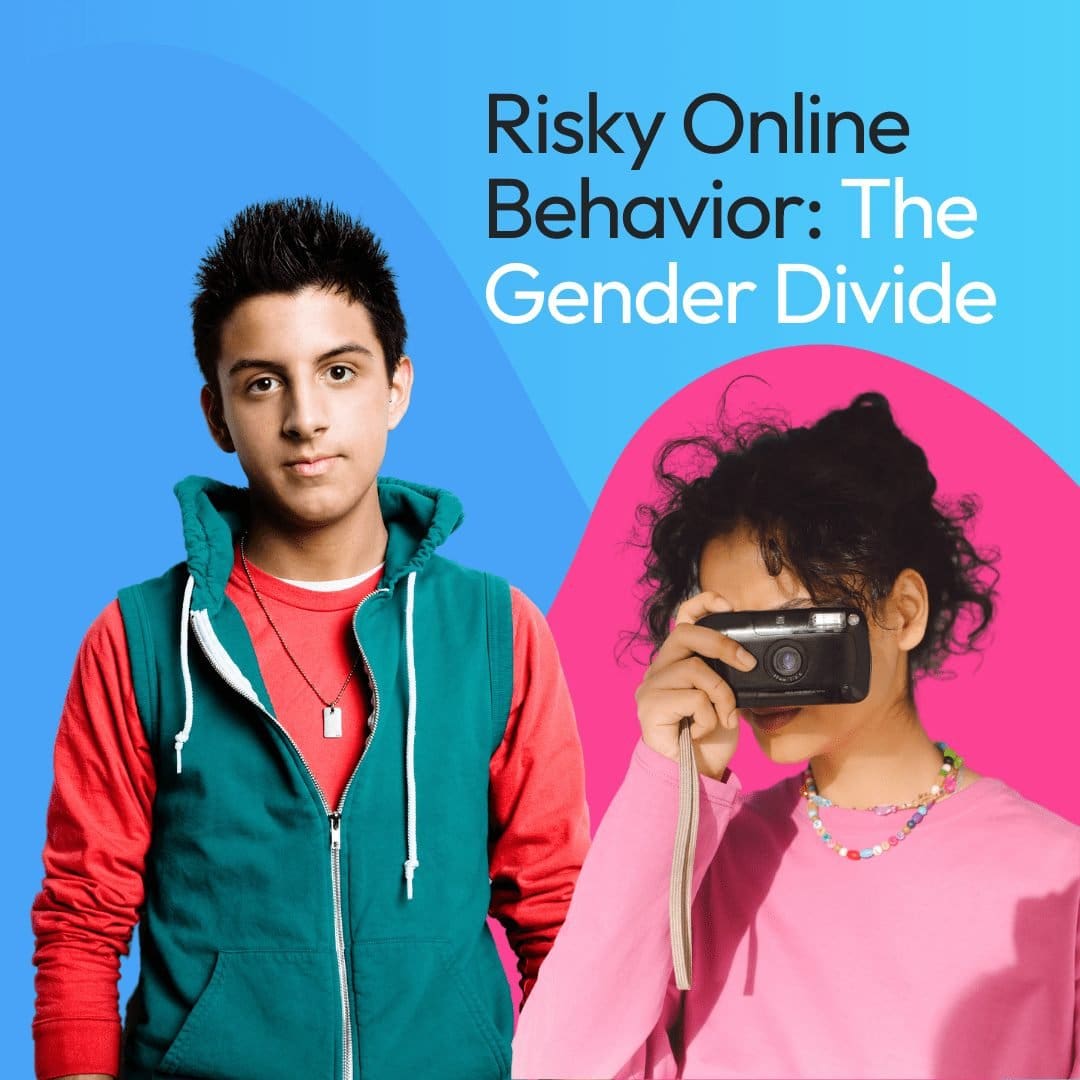Boys and girls both engage in unsafe behavior online. But did you know the type of trouble they are likely to get into online varies by gender? Let’s look at risky online behaviors by gender.
We hear it all the time: boys and girls are different. Although Generation Z and the generations that will follow them are closing the gap on the differences that have divided the genders for centuries, there still remains a cultural bias. Although today’s women are fighting like heck to close the pay gap, the case still remains that men make more than women, even for equal work. When you open a magazine, you are likely to see dolls and kitchen playsets marketed toward girls, whereas you will see toys guns and fighting figurines targeting boys. Because boys are typically taller and differently-built than girls, they are generally thought to be stronger. So, yes. Boys and girls are different, and society, businesses, the media and so on all help to further the divide.

Gender and social media
Interestingly, the difference between boys and girls spreads to online behavior. I am only a girl mom, so I often don’t witness the difference in behavior between boys and girls firsthand. But raising three daughters in this internet age scares me. Just this morning, on the ride to school, my oldest asked me to remind her, yet again, why I didn’t think allowing her to have social media was a good idea. So I reminded her, again, that I don’t want her on social media for a number of reasons, one of them being that I don’t want to give strangers that kind of access to her. I’ve read too many articles about girls, in a moment of poor judgement, snapping a photo exposing nude body parts and sending if off into the world, only to suffer extreme repercussions later (I heard the story of Phoebe Prince back when my babies were still in diapers and it has stuck with me all these years). So, my husband and I have decided that we simply aren’t ready to give her social media account access yet.
Gender and sex
But as I sat down to write, I started wondering: do boy moms worry about nude photos and the internet the same way girl moms do? After all, one of the biggest gender disparities deals with sex and all its hype. I dealt with this in high school, as I’m sure my parents did before me and so on. A guy who sleeps with a lot of girls is a player. He’s cool, he’s desirable. He’s, quite simply, a stud. But a girl who sleeps with a lot of guys? She’s shameful. She gets called horrible slurs and names. She gets branded a harlot. Why? Because society tells us that’s the way it is.
Back to my question at hand: do moms of boys worry about the same risky online behaviors that moms of girls do? I worry about my daughters sending a topless photo to a boy. Because that photo would be passed around so quickly, and she would be shamed and embarrassed before the lunch bell even rings. But a nude photo of a guy in her class? Well, I doubt he would be shamed the same way that she would. Unfair, I know.
Gender and risky online behavior
So I did some digging, and it turns out that teenage boys and teenage girls do take different risks online, but both engage in risky online behaviors. According to this study from Harvard, adolescent boys generally see more pornography online, and they usually seek it out. Girls tend to be victimized more often by online solicitation. This same study, however, also suggests that girls are slightly more protective of information but more willing to share photos than boys are. Girls tend to more frequently have private profiles on social media networks than boys, but boys are more willing to post their phone numbers online than girls are. Sending out photos and giving out your phone number are both risky behaviors for preteens and teens to be engaging in. There is tons of research out there to establish that girls are more at-risk online than boys. This study, called The State of the Worlds Girls 2020 has pages and pages of information about the risk young girls (and girls and women of all ages) face each time they go online. However, the Harvard study suggests that boys who identify as LGBTQ+ are at a significantly increased risk for online harassment and solicitation.
Gender and risky online behaviour
So, my internet sleuthing has backed my belief that my daughters are at-risk of being targeted by predators who want illicit photos or other nefarious content or information. Boys, too, face risks online and engage in behaviors that could have real-world repercussions. But I suppose this is simply the age we live in. As I type, I’m connected to the internet, which means that anyone, anywhere, could be trying to access my IP address or hack my social media accounts or attempt to drain my bank account virtually. It is my job, though, as a parent, to do my best to keep my daughters safe, both online and in real life. And I think that identifying the threats that could potentially harm them is a great first step!